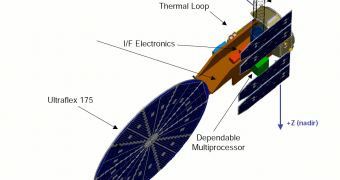The NASA (National Aeronautics and Space Administration) has serious thoughts with the Linux operating system especially regarding one of their largest projects, called the New Millennium Program Space Technology 8 (a.k.a ST8).
More exactly, NASA is interested in proving the feasibility of a commercial off-the-shelf hardware and software for scientific space missions. In order to port the lab applications to the spacecraft the agency needed a good development applications and runtime environments. One of the major experiments where NASA considered to make use of the Linux OS is its Dependable Multiprocessor (DM), led by Honeywell Aerospace. There's also ST8's "Spacecraft bus", built by Orbital Sciences which will be driven by Linux.
It was said that Honeywell would deal with several obstacles, mainly through enhancements to Linux via custom high-availability middleware. On the software side, Wind River (embedded Linux vendor) officials said they've been selected to "support the development of NASA's New Millennium Program Space Technology 8 (ST8) Dependable Multiprocessor." The company will also have to supply the Platform for Network Equipment, Linux Edition (PNE-LE) for use on the DM system. The GoAhead SelfReliant high-availability middleware and Honeywell's "Dependable Multiprocessing Middleware" are also expected to be on the list. Wind River claimed that the DM system's Linux-based software would enable the ST8 to " process and analyze its own data to make instant decisions about what is observed without having to send the information to Earth and wait for a reply." Therefore, the environment should be able to dynamically adjust the level of fault tolerance for various subsystems, according to criteria such as criticality.
"As space missions continue to become more complex and demanding, it is critical that the onboard computing equipment be built to handle the intense data processing and analysis that is required. As a result of the demonstration of COTS (cost out of shelf) in the ST8 flight experiment, the application of Dependable Multiprocessor technology is expected to yield unparalleled benefits for years to come, particularly in the reduction of development time, cost, and risk of future space systems." stated Dr. John Samson, with Honeywell.

 14 DAY TRIAL //
14 DAY TRIAL //